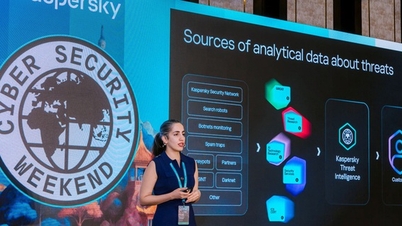SGGPO
The appeal of open source software is that it is free or has a lower price than commercial software from suppliers, but it also brings many risks and challenges to businesses when applying open source software in the digital transformation process. Therefore, businesses should consider the following weaknesses of open source software before intending to use it.
Security risks
This is a factor that businesses often put first when considering choosing software to digitally transform their operations. Because choosing unsafe software will have huge consequences for all business operations. Especially with open source - software that is publicly available on the network, hackers can easily research, analyze vulnerabilities and spread them quickly. This not only poses many risks to users but also to the business system itself. On the other hand, when there is an information security incident, the system will be very difficult to update and fix errors.
 |
Besides the convenience, open source also contains many risks regarding safety and security. |
According to the assessment survey, the persistent problem with open source software is the increasing number of security flaws and many vulnerabilities do not have patches because there is no competent and responsible unit to implement them. Before there is a patch, hackers can exploit these vulnerabilities.
Another problem with open source software is the difficulty in controlling and assessing the level of security because the source code is developed by many different users. There are even potential spy codes containing viruses to intentionally collect information for malicious purposes.
Risks in implementation and operation
Not all open source software has detailed and complete installation and operation instructions like commercial software, which will cause difficulties in the implementation and operation process, especially without descriptions of common errors and how to handle them, so there will be problems in the early stages of implementation and risks in the operation process. Moreover, the cost of infrastructure for implementation is not optimized, causing costs to increase.
Poor compatibility and can crash at any time
Some open source software may not be stable and contain bugs, poor compatibility with other software or platforms. This leads to difficulties in using the software and can even cause serious problems at any time. The US Government 's Healthcare.gov system incident in 2013 used open source code, stopping the website after 2 hours of launching when traffic increased nearly 5 times, then had to be closed due to problems arising from the source code, important technical positions lacked experience in product development.
The Healthcare.gov incident shows that serious incidents can occur at any time if the development, operation and exploitation unit lacks a deep understanding of the system. This leads to prolonged incident handling time, or even failure to fix the problem, which can cause loss of customer data, information leakage, etc., greatly affecting the reputation of the parent unit.
Difficult to upgrade and expand as needed
Open source software is available online, so the staff who receive open source software do not have a deep understanding of the system. Therefore, when there are customization requests from many customers, it will be very difficult to change and meet the customer's requirements.
Slow performance
Many open source software have much slower performance than closed source. Because in open source code, there are inevitably redundant code and functions, which will occupy more system resources than usual and make the system run slowly.
Lack of support and dependence on user community
Some open source software is not supported or has more limited support than commercial software, and although supported by the open source free software development community, there is no clear commitment to the quality of support.
On the other hand, some open source software depends on the user community to maintain and develop. If the community does not develop or the vendor changes its business strategy and can terminate the project at any time, users may encounter problems related to features, stability or even be unable to continue using the software and have to look for other software alternatives.
With large systems or core, foundational software, replacement will cost a lot of resources or be impossible and cause great damage... This is also a costly risk lesson and has caused many companies, businesses, and governments to suffer when RedHat terminated the open source project Project Centos after nearly 20 years of its inception and stopped providing the CentOS Linux 8 version in 2021. Because it is a server operating system with many software systems and long-term service provision, the conversion is very complicated, and many specific systems cannot be converted.
Software copyright disputes are likely to occur.
Some open source software may contain legal elements, including copyright infringement or improper use of the license. Using such software may cause legal problems for the user.
Source



![[Photo] Images of the State-level preliminary rehearsal of the military parade at Ba Dinh Square](https://vphoto.vietnam.vn/thumb/1200x675/vietnam/resource/IMAGE/2025/8/27/807e4479c81f408ca16b916ba381b667)




![[Photo] Parade blocks pass through Hang Khay-Trang Tien during the preliminary rehearsal](https://vphoto.vietnam.vn/thumb/1200x675/vietnam/resource/IMAGE/2025/8/27/456962fff72d40269327ac1d01426969)

































































































Comment (0)